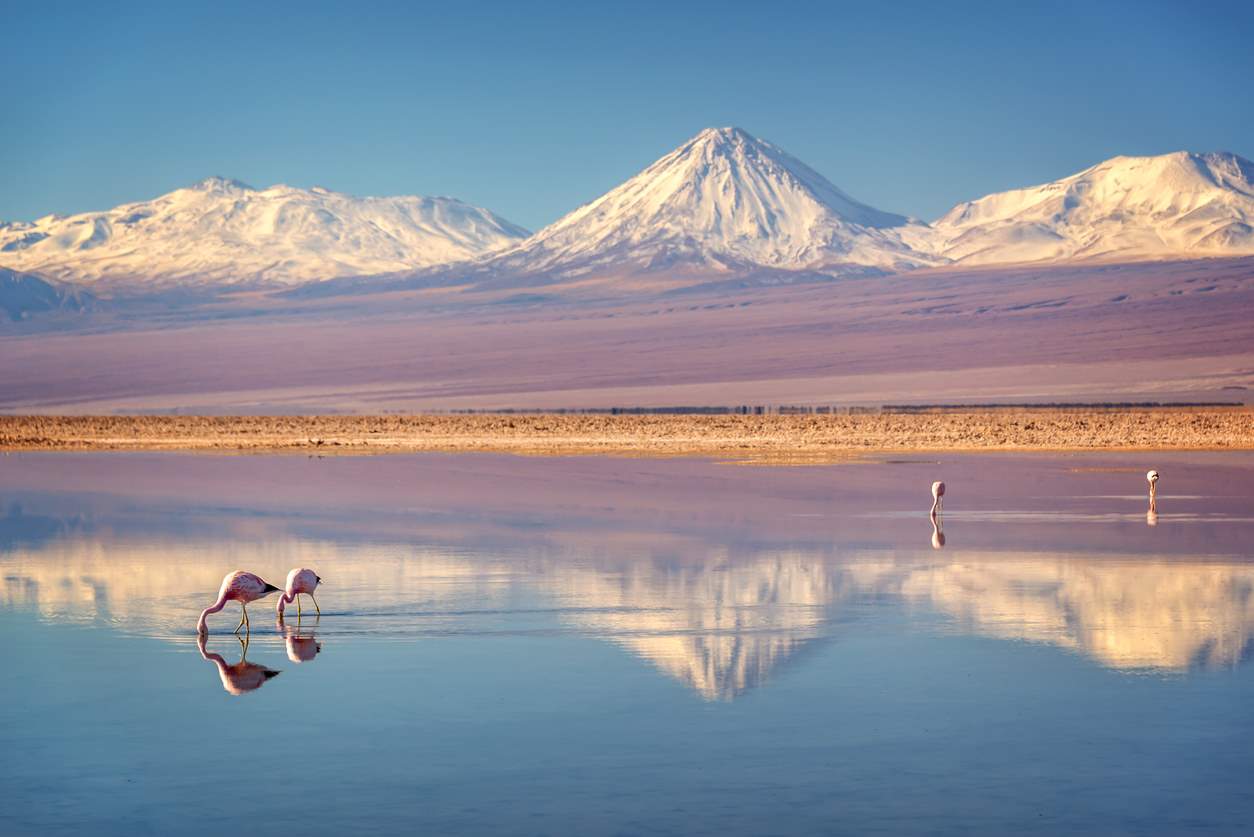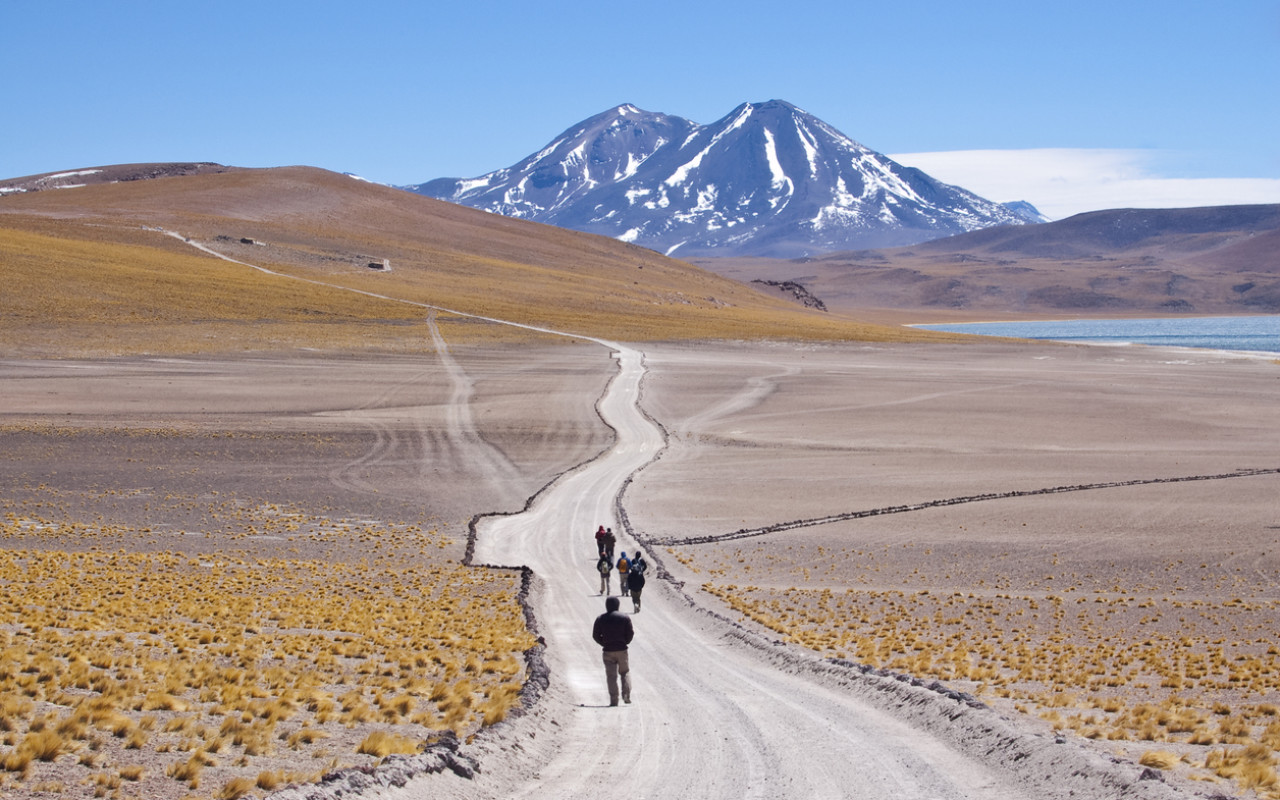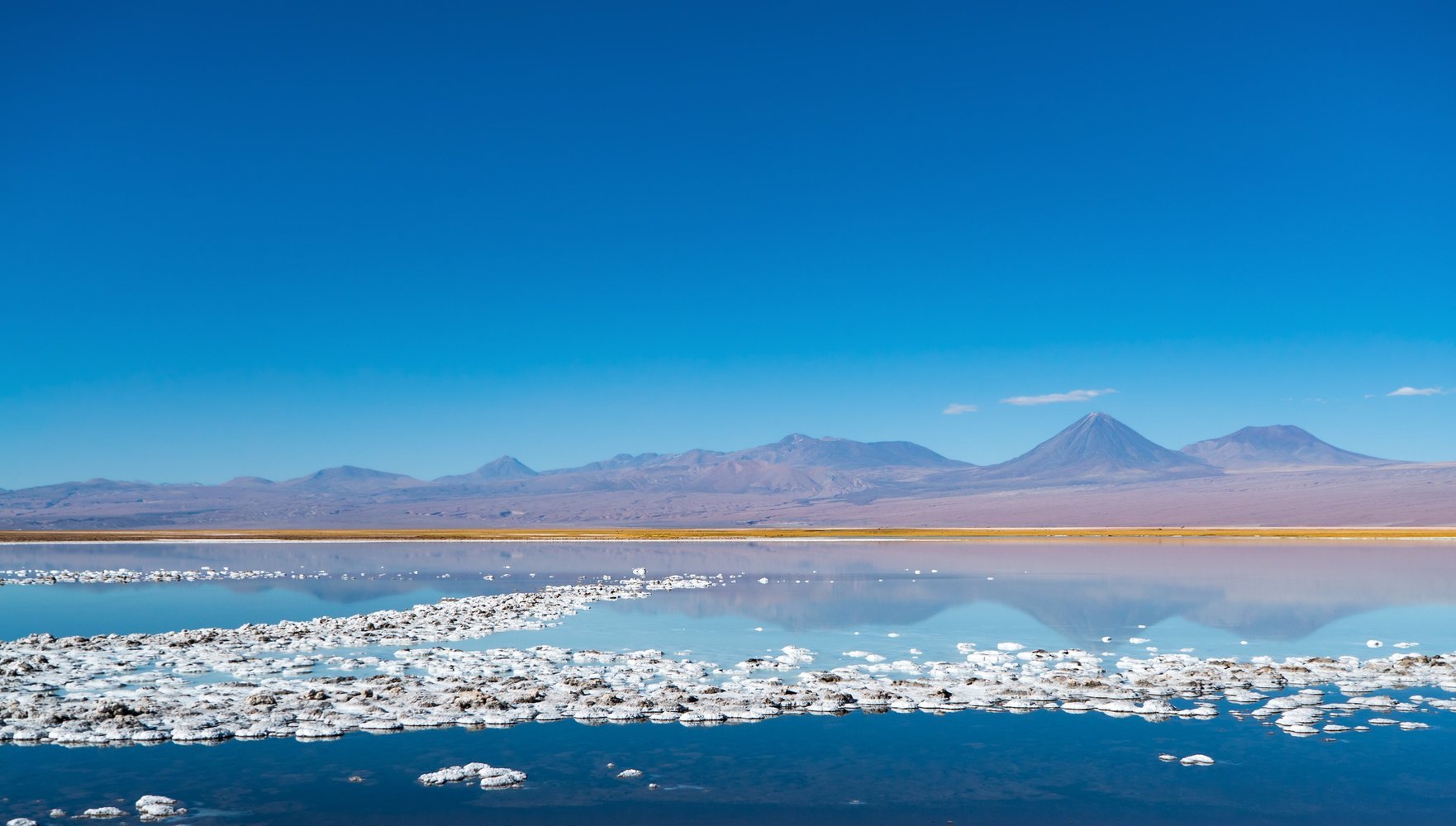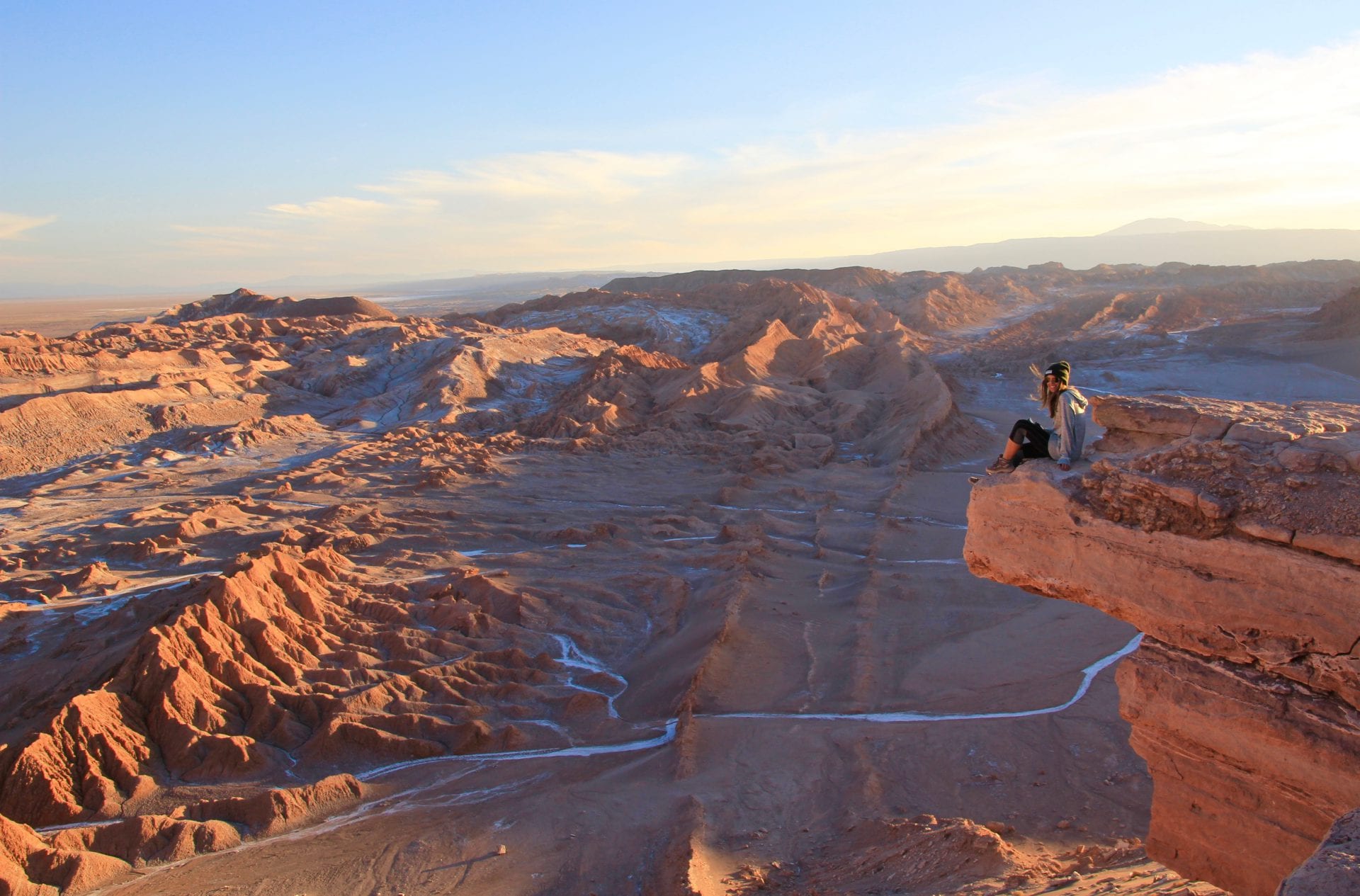Of the natural landscapes that in Chile have more visits is found in Atacama Desert an area that is generally called the driest desert on earth, however this seems to be a mistake. We will talk about its climate to touch that point, its flora, fauna and some tourist sites in it to visit them.

Atacama desert Chile
This desert is considered "the driest on earth" and is located in the Latin American country: Chile, from the north to the north of Coquimbo, Arica, Antofogasta, Atacama, Parinacota and Tarapacá, with a western boundary with the Pacific Ocean and to the east with the well-known Cordillera de los Andes, taking into account these regions it is estimated that it has an area of more than 105.000 square kilometers, stretching 1600 kilometers long and 180 kilometers wide at its maximum point.
In fact, other regions can also be considered within the limits of this desert, for example the coastal area of Peru, the Puna de Atacama and the eastern slope of the Andes mountain range in the southwest of Bolivia and in the northwest of Argentina. .
It is a desert that is characterized by its size, its aridity, its highest points, its relationship with astronomy (stars and constellations) and the different spaces that are found such as oases, salt flats or lagoons with their characteristic blue color. Of the tourist attractions that can be found in Chile, this desert is one of the most frequented. At the end of this post, some ideal tourist sites to visit when you go to this desert will be presented.
This is a desert where various studies related to astronomy are made, many locations within it are points from which the stars and constellations are observed. This is because it has an ideal height with respect to the sea to make a good observation, without the presence of clouds and without light pollution. In addition to that, it houses several Types of birds.
This not only means that tourists observe the sky from anywhere with the help of some observation equipment, there are numerous observatories in this desert such as La Silla, the Atacama Large Millimeter/submillimeter Array, the Paranal Observatory, among others. In addition, not only are these working to provide an incredible tourist experience or to carry out research, others are planned to be built, such as the Gian Magellan Telescope or the Large Synoptic Survey Telescope.
Not only is stargazing frequent in this desert, extreme sports can also be practiced where athletes from all over the world have come for the championships that have been held in it, for example the Dakar Rally Series that has been held in that desert since 2009 to 2015. Likewise, the Atacama Solar Race was organized with solar vehicles that run through Toconao, Calama, Iquique, Antofagasta and other areas, this is something unique in all of Latin America.
How was it formed?
Regarding the origin of this desert, it is believed that before being a desert it was an underwater relief, that would be three million years ago, after the Fohn effect that affected the Andes mountain range by discharging rainfall in some parts of the mountain. .
All this is a process that not only includes the activity of the clouds that pass over this area, but also the current of water that reaches the desert. In addition to that, the type of surface that it has also plays an important role in the formation of this desert.
History
Regarding the history behind this desert, it can be seen that there have been populations of various types, the Europeans remained in their lands for a time, in addition to some ethnic groups such as the monkeys, the coles, the aurochs and then the Inca empire. Then it was possible to see what would be the mining task (which was between 12.000 and 10 years).
As for the dispute over this territory, some documents place it as Bolivian territory in 1866 and 1874, however there were disputes around this desert when military actions were taken against Bolivia, later (in 1873) Chile declared war on Peru and Bolivia, a conflict called the War of the Pacific that lasted until 1884 after the victory of Chile.
After that, this nation remained with many territories such as those that at that time were called "Bolivian Department of the Litoral, Peruvian department of Tarapacá and the Peruvian province of Árica" among them was this desert. Since then Chile maintains its domain over these lands.
Climate
Consideration as the driest desert in the world is actually incorrect, instead the dry valleys that are in Antarctica are, in this desert it is possible to see a rain every 15 or every 40 years, even a maximum time has been recorded 400 years without any rain in its entire center. Something curious is that in the months of January and February this central part of the desert is affected by what is known as the "altiplanic winter" where there are rains that have even electrical storms.
The temperature at night can reach -25 degrees C and during the day they can reach 25 and even 50 C ° in the shade. The temperature by seasons indicates that in summer it is from 4 to 10 C°. From the rest you can see winds in the form of a tornado or blizzards that reach 100 kilometers per hour, at noon.
Flora
As for the flora that can be seen in this ecosystem, there are cacti of various species. Since there are some areas that have relatively large bodies of water, you can see species such as the pike, the matilla or the emerald. The flowers that grow thanks to the lagoons that are found in this desert are the llareta, the wild straw, the tamarugo, the white carob tree, the salda grass, shrubs such as the cahiyuyo, the breas and others not yet confirmed.
Fauna
In relation to Desert animals, it is possible to see various bird species and other types of species such as: hummingbirds, pigeons and turtledoves, culpeo foxes, Patagonian gray foxes, guanacos, owls, paulina lizards, the tamarugo comeebo, the diuca, the curly toad, the four-eyed toad, among others. In any case, the height of this desert and its climatic conditions reduce the possibility of finding more diversity of species inhabiting it.
Tourist sites to visit in the desert
This desert is a large territory that encompasses several ideal tourist spots to visit on an adventure trip, some of the places to visit are the following:
Tatio Geyser
In the north of San Pedro de Ataca you can find a field of geysers considered to be the largest on earth, you can see how its fumaroles emerge from the earth when 80 degrees C have passed, generally this occurs quite early from the 6 or 7 am, it is a show that makes it one of the most visited tourist sites.
It is necessary to maintain a safe distance from these geysers, so that the emanations that they expel are not inhaled, in addition to that, wearing clothing that provides shelter is ideal to resist the temperature and also as a safety measure. These are one of the many precautions that are recommended to be taken when visiting this geyser, as well as when visiting the white geyser that can be reached after traveling five kilometers from Tatio.
cejar lagoon
The lagoons in this desert are a characteristic that do not go under the table when a tourist visit to the place is planned, then the cejar lagoon is recommended, which is located south of San Pedro de Atacama approximately five kilometers away.
These lagoons have the particularity that you can float in their emerald blue waters at a higher level than what can be achieved in the Dead Sea. In addition to that, it is surrounded by the Andes mountain range, so the view is really attractive for tourists. The precaution at this point of visit is to wear bathing shoes or sandals to avoid cuts on the edges of the lagoon.
Chaxa Lagoon
This lagoon is among the top of the most visited because it is home to various types of birds, including flamingos, as well as other native species of this ecosystem. A tour guide in this lagoon could answer the question of ¿why are flamingos pink? . It is located in the Salar de Atacama approximately 50 kilometers from San Pedro de Atacama, it has some muddy parts but its waters are not really very deep.
You can see various types of specimens of various species of birds, however other types of animals are not frequently observed because it is not an area that has rainfall in times like summer, you could only see the small parina, the large one, the fox culpeo, the olive mouse, some reptiles and the Chilean flamingo. The recommendation is to visit this lagoon in the company of a guide who can explain the characteristics of each species.
Other lagoons that are recommended to visit are the Miñique and Miscanti, which are no more than 4000 meters uphill, where you can see a landscape dotted with vicuñas and blue waters that provide a very attractive experience.
San Pedro de Atacama
This is a commune that is located in the province of El Loa, it is surrounded by the San Pedro de Atacama river and is known as the gateway to the Atacama desert, this is the main tourist site in this area, from there you depart towards the rest of the desert towns, although the route from another starting point is not ruled out. The number of people who inhabited San Pedro de Atacama did not amount to 260 for the year 2018, so its economy is not as complicated or developed.
Among its tourist spots you can see the Church of San Pedro, which for believers is a visual spectacle that was built in 1744 although they had a repair in 1839. You can also see the Archaeological Museum that contains indigenous objects from the tribes of Chile. Then there are the Tatio geysers that are 0 kilometers to the north, also the Salt mountain range, the Valley of the Moon, the Puritama Hot Springs, the village of Tulor, the Atacama salt flat and the ALMA astronomical observatory.
Catarpe Valley
This valley can be found when traveling five kilometers from the north of San Pedro de Atacama, the interesting thing about this location is that the Incas once built an administrative center. An acatameño about this valley gives the following description:
«Catarpe is a ravine that is in the middle of a fault in San Pedro de Atacama, from here we can observe species of flora and fauna such as carob trees, chañares, peppers, fox tails, Moray Eagle, northern kite among others. In addition, a fluvial terrace is demarcated through which the "San Pedro" river passes.
Valley of the moon
This second valley declared a "nature sanctuary" is located in the desert 13 kilometers west of San Pedro de Atacama. In addition to that name, this valley is part of the National Flamingo Reserve. It is considered that formerly (in the Tertiary Era) in that place there was a very large lake or what would be the inland sea.
It is very attractive to tourists due to its ridges with points on the ground as well as gray and ocher mounds that resemble the Moon. You will not find more than Fabián's lizards and a fairly quiet area, which makes it an ideal place to watch the stars or the sunset if you visit in the afternoon.
Death Valley
A little near the Valley of the Moon is the Valley of Mars or Death, which is characterized by its rock formations and its similarity to the mountain, tourists usually practice sandboarding when they reach the Great Dune, so that is the recommendation on this locality, it is important to remember that it does not have passable roads for vehicles due to the amount of sand that the place has.
In addition to the valley of death, it is recommended to visit the rainbow valley and the Lasar volcano, the first of those mentioned has that name because of the number of colors that can be found in its hills, finding colors such as ocher, black, and violet. , coffee, among others.




